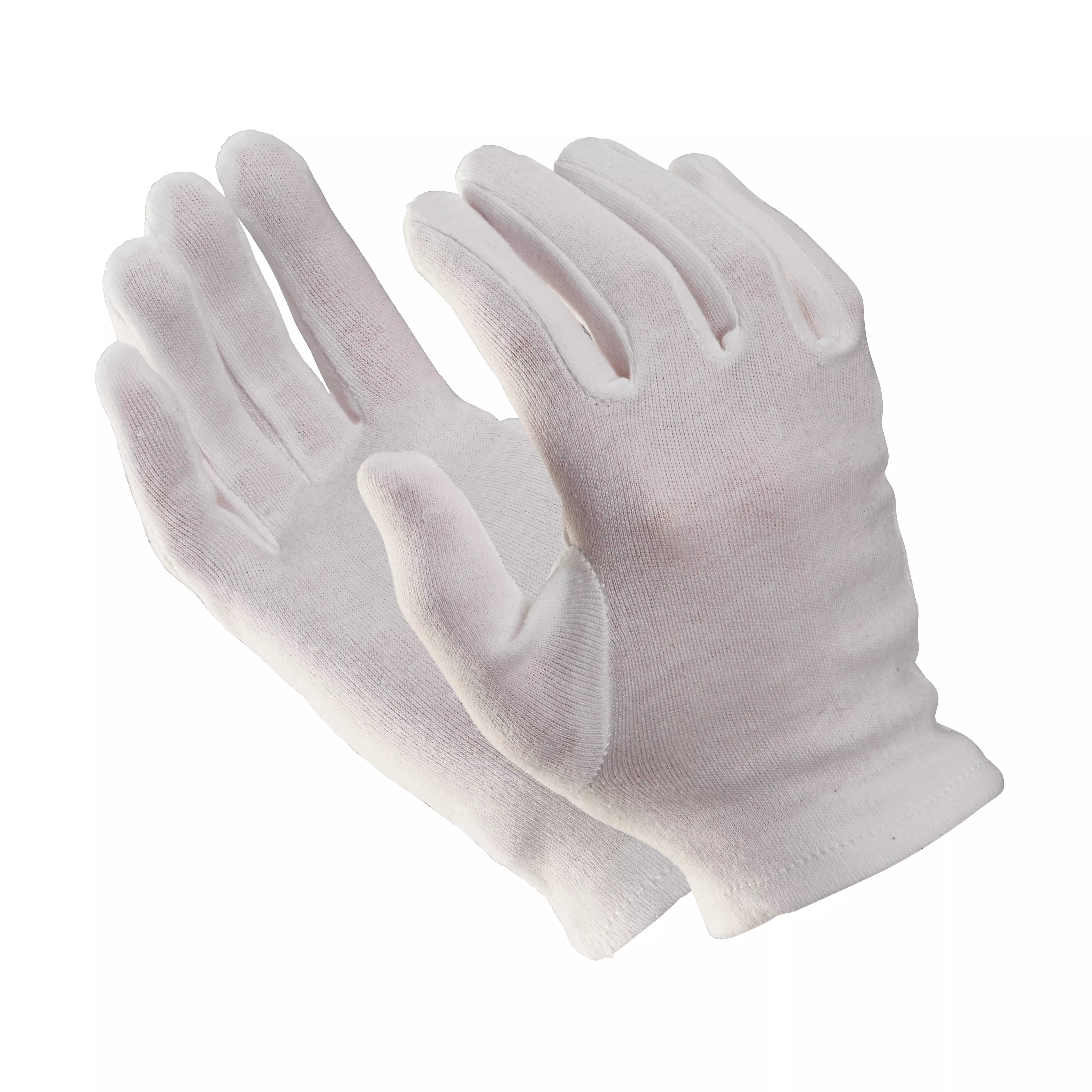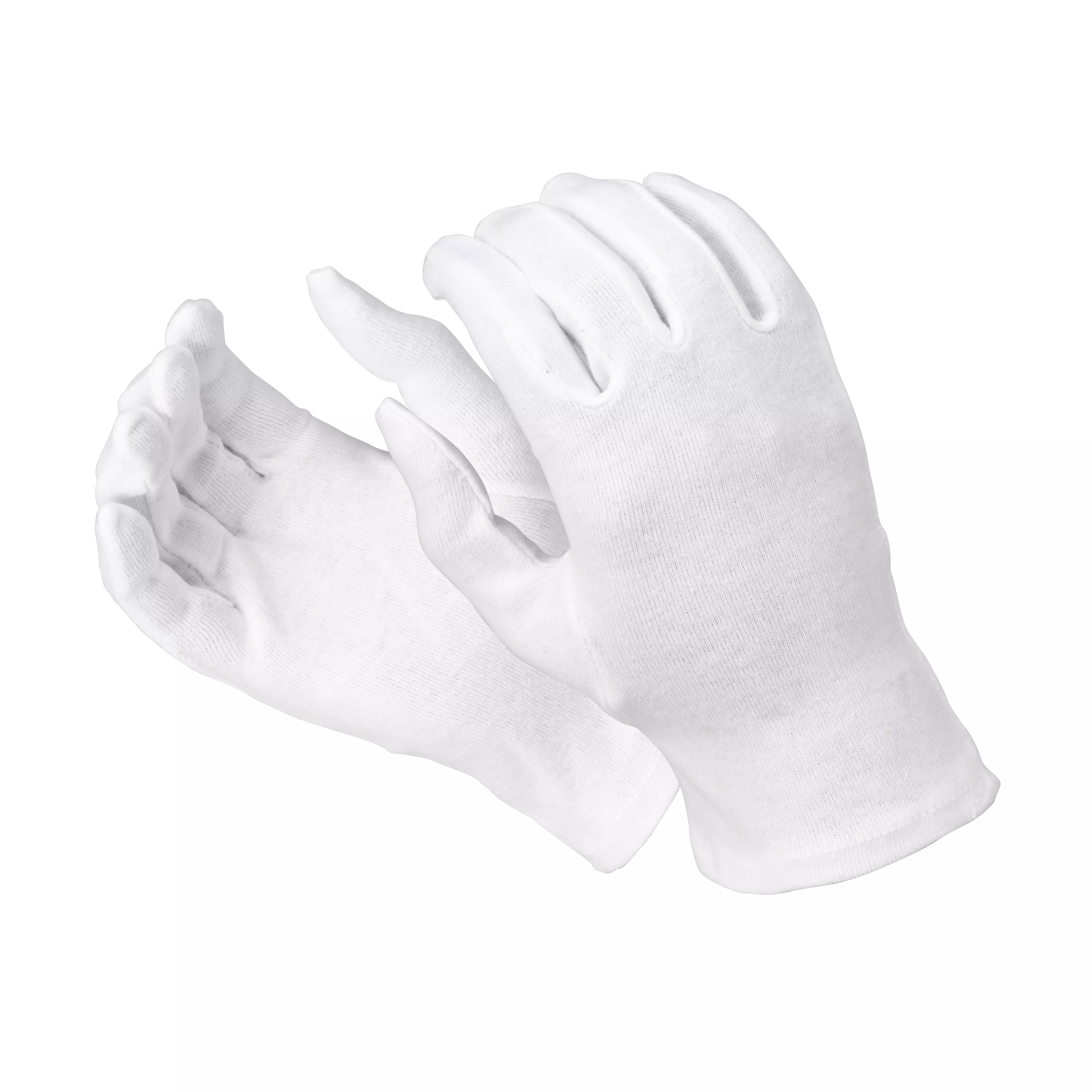Buy cotton gloves
In addition to being very comfortable to wear, cotton gloves also offer special protection for hands and surfaces. They are also particularly breathable and skin-friendly. This also makes them suitable for allergy sufferers
Content: 12 pair (€0.63* / 1 pair)
Available, delivery time: 1-3 days
Content: 12 pair (€1.18* / 1 pair)
Available, delivery time: 1-3 days
Was macht einen Baumwollhandschuh aus?
Baumwollhandschuhe, auch unter dem Namen Trikothandschuhe bekannt, sind ein unverzichtbarer Bestandteil in vielen Bereichen des Arbeitsschutzes. Gefertigt aus weichen Baumwollgarnen oder -mischungen, bieten sie nicht nur eine außerordentliche Weichheit und Hautfreundlichkeit, sondern zeichnen sich auch durch ihre Atmungsaktivität und Haltbarkeit aus. Diese Eigenschaften machen sie zu einer idealen Wahl als Schutzhandschuhe, die nicht nur den Schweiß reduzieren, sondern auch das Tastgefühl verbessern.
Die Naturfaser Baumwolle wird aufgrund ihrer positiven Eigenschaften gerne zur Herstellung von Textilien verwendet. Baumwolle ist sehr hautfreundlich und weist ein geringes Allergiepotenzial auf. Dadurch sind Baumwollhandschuhe auch für Allergiker geeignet. Baumwoll- bzw. Trikohandschuhe sind sehr weich, strapazierfähig, atmungsaktiv und im Vergleich zu anderen Arbeitshandschuhen sehr saugfähig. Daher finden sich Baumwollhandschuhe auch im Bereich Handschutz wieder und haben in der Arbeitswelt einen festen Platz. Im Mittelpunkt steht hier jedoch eher der Produktschutz als der Handschutz.
Wo kommen Baumwollhandschuhe zum Einsatz?
Baumwollhandschuhe sind äußerst vielseitig und decken eine breite Palette von Anforderungen ab. Als Arbeitshandschuhe schätzen Handwerker den weichen Stoff und den hohen Tragekomfort, der einen gewissen Schutz bietet, ohne das Tastgefühl zu beeinträchtigen.
Bei feineren Montagearbeiten ermöglichen sie eine präzise Handhabung von Werkzeugen und Materialien. Bieten so eine gute Alternative zu herkömmlichen Montagehandschuhen. Zusätzlich dienen sie als Innenhandschuhe unter anderen Schutzhandschuhen, um für zusätzlichen Tragekomfort zu sorgen und den Schweiß zu reduzieren.
In sensiblen Branchen wie der Kunst- oder Kosmetikindustrie bieten Baumwollhandschuhe einen effektiven Schutz vor Fingerabdrücken und Verunreinigungen.
Auch bei Reinigungsarbeiten schützen sie die Hände vor aggressiven Reinigungsmitteln und Schmutz, ermöglichen dabei aber eine präzise Ausführung der Tätigkeiten. Sie dienen außerdem als Schutzschicht für empfindliche Oberflächen, ob beim Reinigen von Glas oder dem Umgang mit empfindlichen elektronischen Geräten.
Baumwollhandschuhe: Eine Linderung für Neurodermitis-Patienten
Baumwollhandschuhe sind nicht nur im Arbeitsschutz ein unverzichtbares Hilfsmittel, sondern spielen auch eine bedeutende Rolle in der Hautpflege, insbesondere für Menschen, die an Neurodermitis leiden. Diese Hauterkrankung, die durch trockene, juckende und entzündete Hautpartien charakterisiert ist, erfordert eine sorgfältige Pflege und Schutz der betroffenen Bereiche. Baumwollhandschuhe bieten hier eine sanfte und wirksame Lösung.
Atmungsaktivität und Hautfreundlichkeit: Baumwolle ist bekannt für ihre Atmungsaktivität und Hautfreundlichkeit, was die Haut atmen lässt und Schwitzen minimiert – zwei Faktoren, die besonders für Neurodermitis-Patienten von Bedeutung sind. Die natürliche Faser verhindert zusätzliche Reizungen und unterstützt die Haut bei ihrer natürlichen Heilung.
Schutzbarriere: Das Tragen von Baumwollhandschuhen kann als Schutzbarriere dienen, die den direkten Kontakt mit Allergenen und Reizstoffen verhindert. Dies ist besonders wichtig für Personen, deren Haut leicht auf Umweltfaktoren oder Substanzen reagiert, die sie im Alltag berühren.
Verhinderung des Kratzens: Ein weiterer signifikanter Vorteil von Baumwollhandschuhen liegt in ihrer Fähigkeit, das Kratzen zu unterbinden oder zumindest zu minimieren. Für Neurodermitis-Patienten kann das nächtliche Kratzen unbewusst erfolgen und den Heilungsprozess stören. Baumwollhandschuhe können diese unbewussten Reaktionen einschränken und damit zur Hautberuhigung beitragen.
Pflegetipps: Für den optimalen Nutzen sollten die Handschuhe regelmäßig gewechselt und entsprechend den Pflegehinweisen gereinigt werden. Eine sanfte Waschroutine hilft, die Lebensdauer der Handschuhe zu verlängern, während gleichzeitig für eine hygienische Umgebung für die Haut gesorgt wird.
Die Integration von Baumwollhandschuhen in die Pflegeroutine von Neurodermitis-Patienten kann somit einen wertvollen Beitrag zur Linderung der Symptome leisten und die Lebensqualität signifikant verbessern.
Pflegehinweise von weißen Baumwollhandschuhen für eine lange Lebensdauer
Um die Langlebigkeit Ihrer weißen Baumwollhandschuhe zu gewährleisten, ist eine sachgerechte Pflege essentiell. Waschen Sie die Handschuhe in kaltem oder lauwarmem Wasser, um ein Einlaufen zu verhindern, und verwenden Sie ein mildes Waschmittel. Die Handschuhe sollten von Hand gewaschen werden, um ihre Form zu bewahren. Nach dem Waschen die Handschuhe ausdrücken, nicht wringen, und flach liegend an der Luft und ohne direkte Sonneneinstrahlung trocknen. Vermeiden Sie die Verwendung von Wäschetrocknern, um ein Einlaufen zu verhindern, und beachten Sie stets die Pflegeanweisungen des Herstellers.
Wie bestimmen Sie die passende Größe Ihres Baumwollhandschuhs?
Legen Sie ein Maßband um die breiteste Stelle Ihrer Hand (Daumen ausgeschlossen) und messen Sie den Umfang. Anhand der unten stehenden Tabelle können Sie nun die entsprechende Größe ermitteln:
| 17,5 cm | 18 cm | 19 cm | 20,5 cm | 22 cm | 23 cm | 24 cm | 26 cm | 27 cm | 27,5 cm | 28 cm |
| S | S | S | S | M | M | L | L | XL | XL | XXL |
| 6 | 6,5 | 7 | 7,5 | 8 | 8,5 | 9 | 9,5 | 10 | 10,5 | 11 |
Baumwollhandschuhe, ein Muss für Schutz und Komfort
Baumwoll- bzw. Trikothandschuhe spielen eine unverzichtbare Rolle im Arbeitsschutz und bieten als Schutzhandschuhe sowohl physischen Schutz als auch Komfort. Ihre Atmungsaktivität, Weichheit und das verbesserte Tastgefühl machen sie zu einer hervorragenden Wahl für verschiedenste Anwendungen und Industrien. Die richtige Pflege sorgt dafür, dass sie ihre Funktionalität und Bequemlichkeit langfristig beibehalten.


